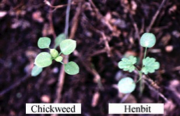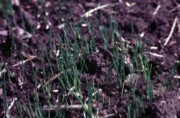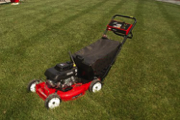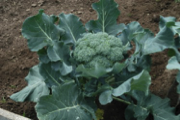Video of the Week:
Storing Tender Bulbs for the Winter
Upcoming Events:
Mark the date to attend the Kansas Turfgrass Conference in conjunction with KNLA on December 6, 7 & 8 in Topeka.
The conference is an excellent way to learn about turf, nursery and landscape management, visit with old friends, network with new ones, and see all the latest equipment and supplies from local and national vendors.
The conference has been approved for Commercial pesticide recertification hours:
1 Core hour 3A - 8 hrs 3B - 9 hrs
International Society of Arboriculture CEUS and GCSAA education points will also be available by attending the conference.
Download a copy of the program, get exhibitor information, or register online
http://2016ktf.eventbrite.com
Turfgrass:
Control Broadleaf Weeds in Lawns in Late October - Early November

Herbicides will translocate to the roots as well and will kill the plant from the roots up. Choose a day that is 50 degrees or higher. The better the weed is growing, the more weed killer will be moved from the leaves to the roots. Cold temperatures will slow or stop this process.
Weed Free Zone (also sold under the name of Speed Zone) contains the three active ingredients mentioned above, plus carfentrazone. It will give a quicker response than the other products mentioned especially as temperatures approach 50 degrees. (Ward Upham)
Why Late Lawn Seedings Often Fail

The problem with late plantings is not that the seed will not come up or that young grass plants are sensitive too cold. Most often, the problem is with rooting. Unless the young grass plants have a fairly extensive root system, the freezing and thawing that takes place during winter heaves plants out of the ground, and they dry out and die.
Regardless of when planted, be sure the new lawn is kept watered through the fall. More mature lawns will need less frequent watering but all should go into the winter with moist soil. (Ward Upham)
Tucking Your Lawnmower in for the Winter

Sharpening rotary mower blades is fairly straightforward. The following steps will guide you through this process:
* Check the blade for major damage. If you can't fix it, it likely will need to be replaced.
* Remove grass and debris from the blade with a moist cloth. Dry before beginning to sharpen the cutting edge.
* Remove nicks from the cutting edge, using a grinding wheel or hand-file.
* If using a grinding wheel, match the existing edge angle to the wheel. If hand-filing, file at the same angle as the existing edge.
* Grind or file until the edge is 1/32 inch, about the size of a period.
* Particularly with a grinding wheel, avoid overheating the blade as this may warp it.
* Clean the blade with solvent or oil, much like if you were cleaning a gun, for optimum winter storage. Avoid using water because it will promote rust.
Following these tips can help you better prepare your mower for winter storage and also save you some steps this coming spring. (Ward Upham)
Vegetables:
Hardiness of Cool-Season Vegetables

Plants termed “hardy” can take lower temperatures but are damaged when the temperature drops to the low 20s. These include cabbage, broccoli, cauliflower, Brussels sprouts, carrots, turnips, and kale.
Certain root crops can essentially be stored outside even after the leaves have been damaged or killed by frost. Beets, carrots, potatoes and turnips can be mulched and harvested as needed until the soil starts to freeze in late November to December.
Growing vegetables in Kansas can be a challenge, but we have an extremely long gardening season. We can harvest from early April (asparagus) to early December. Winter is a good time to plan and prepare for next year’s crops. (Ward Upham)
Ornamentals
"Apples" on an Ornamental Shrub

Contributors: Ward Upham, Extension Associate


 RSS Feed
RSS Feed
